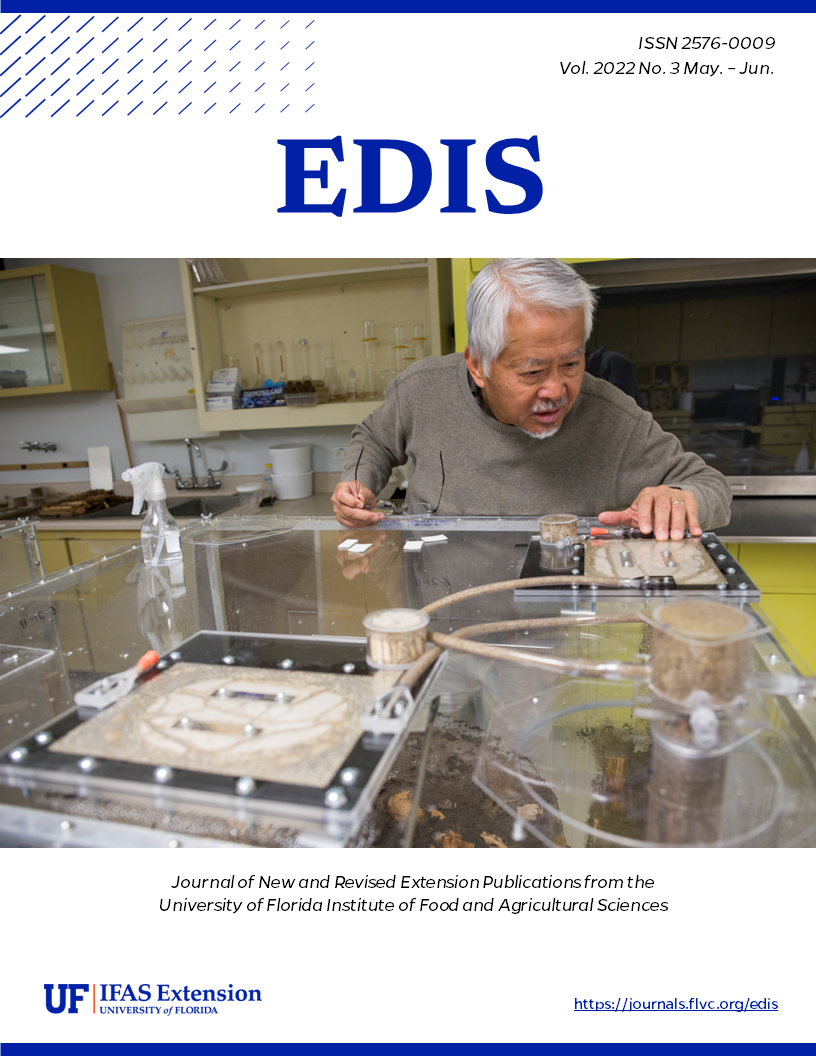Resumen
Bees are efficient pollinators known to be key components of healthy forests. Thus, bees are often used as indicators of community response to restoration and disturbances, including fire. In longleaf pine savannas, the open canopies and floral resources that increase bee diversity and abundance are promoted by applying frequent, patchy prescribed fires. This publication is aimed to help fire and natural resource managers, landowners, and interested citizens learn more about the benefits of using fire to promote bee diversity in longleaf pine savannas.
Citas
Blanchard, M. D., and W. J. Platt. 2021. “Ground Layer Microhabitats Influence Recruitment of Longleaf Pine in an Old-Growth Pine Savanna.” The American Midland Naturalist 185 (1): 15–31. https://doi.org/10.1637/0003-0031-185.1.15
Campbell, J., J. Hanula, and T. Waldrop. 2007. “Effects of Prescribed Fire and Fire Surrogates on Floral Visiting Insects of the Blue Ridge Province in North Carolina.” Biological Conservation 134 (3): 393–404. https://doi.org/10.1016/j.biocon.2006.08.029
Cole, T. J., and R. A. Hataway. 2016. “Prescribed Burning Affects a Measure of Fitness in Ctenus hibernalis (Araneae: Ctenidae) at Oak Mountain State Park, Shelby County, AL.” Southeastern Naturalist 15 (4): 646–652. https://doi.org/10.1656/058.015.0407
Griffin, S. R., and N. Haddad. 2021. “Connectivity and Edge Effects Increase Bee Colonization in an Experimentally Fragmented Landscape.” Ecogeography 44 (6): 919–927. https://doi.org/10.1111/ecog.05299
Kreye, J. K., J. M. Varner, and L. N. Kobziar. 2020. “Long-Duration Soil Heating Resulting from Forest Floor Duff Smoldering in Longleaf Pine Ecosystems.” Forest Science 66 (3): 291–303. https://doi.org/10.1093/forsci/fxz089
Maleque, M., H. Ishii, and K. Maeto. 2006. “The Use of Arthropods as indicators of ecosystem integrity in forest management. Journal of Forestry, 104, 113–117.
Moylett, H., Youngsteadt, E., and C. Sorenson. 2020. “The Impact of Prescribed Burning on Native Bee Communities (Hymenoptera: Apoidea: Anthophila) in Longleaf Pine Savannas in the North Carolina Sandhills.” Environmental Entomology 49 (1): 211–219. https://doi.org/10.1093/ee/nvz156
Odanaka, K., J. Gibbs, N. E. Turley, R. Isaacs, and L. A. Brudvig. 2020. “Canopy Thinning, Not Agricultural History, Determines Early Responses of Wild Bees to Longleaf Pine Savanna Restoration.” Restoration Ecology 28 (1): 138–146. https://doi.org/10.1111/rec.13043
Sexton, A. N., and S. M. Emery. 2020. Grassland Restorations Improve Pollinator Communities: A Meta-Analysis.” Journal of Insect Conservation 24:719–726. https://doi.org/10.1007/s10841-020-00247-x
Simmons, S. A., and J. L. Bossart. 2020. “Apparent Resilience to Fire of Native Bee (Hymenoptera: Apoidea) Communities from Upland Longleaf Pine Forests in Louisiana and Mississippi.” Southeastern Naturalist 19 (3): 567–581. https://doi.org/10.1656/058.019.0316
Strange, L. A. 2021. “The Bumble Bees of Florida, Bombus spp.” 2012. EENY-050. EDIS 2012 (1) https://doi.org/10.32473/edis-in207-2011
Ulyshen, M. D., S. Pokswinski, and J. K. Hiers. 2020. “A Comparison of Bee Communities between Primary and Mature Secondary Forests in the Longleaf Pine Ecosystem.” Scientific Reports 10 (1): 2916. https://doi.org/10.1038/s41598-020-59878-4

